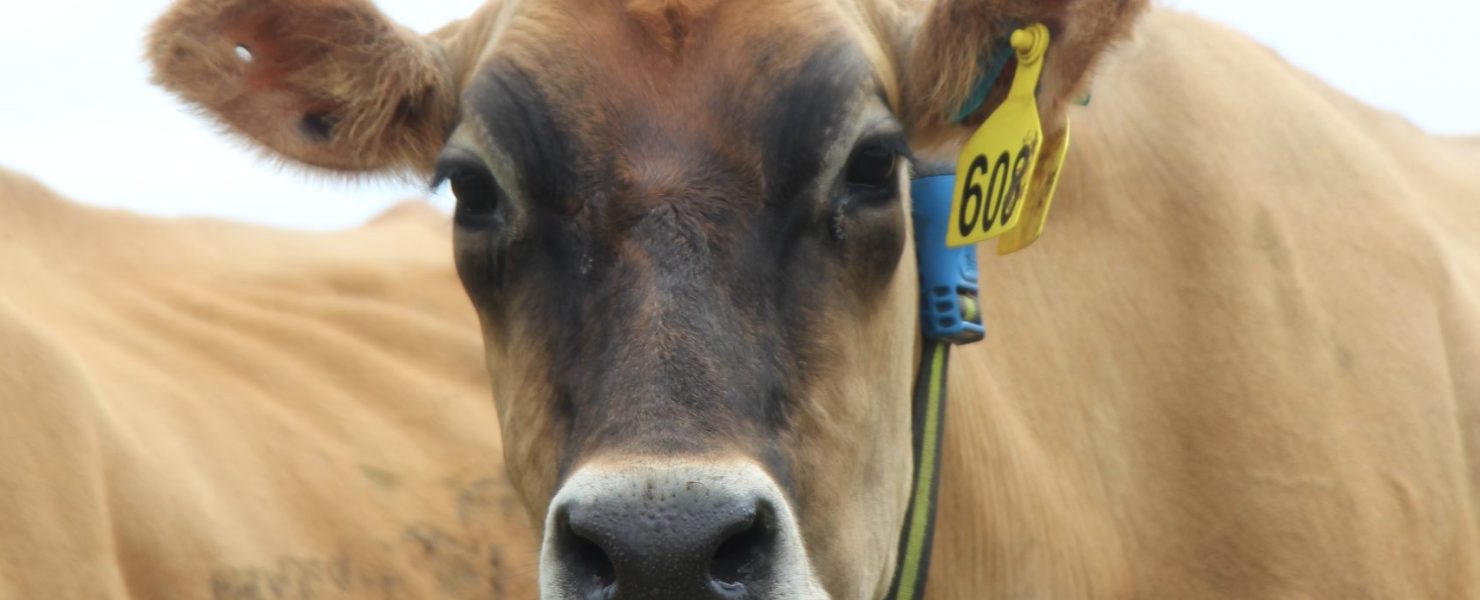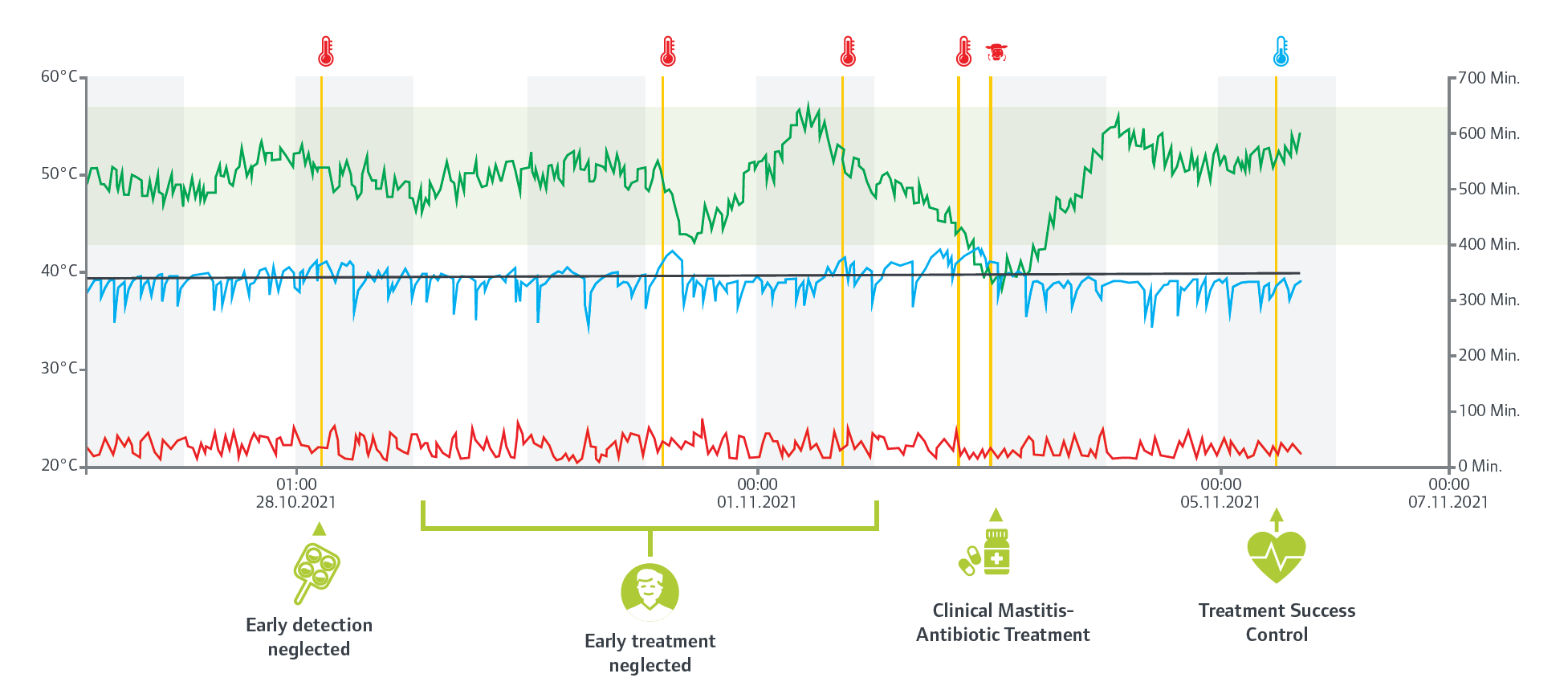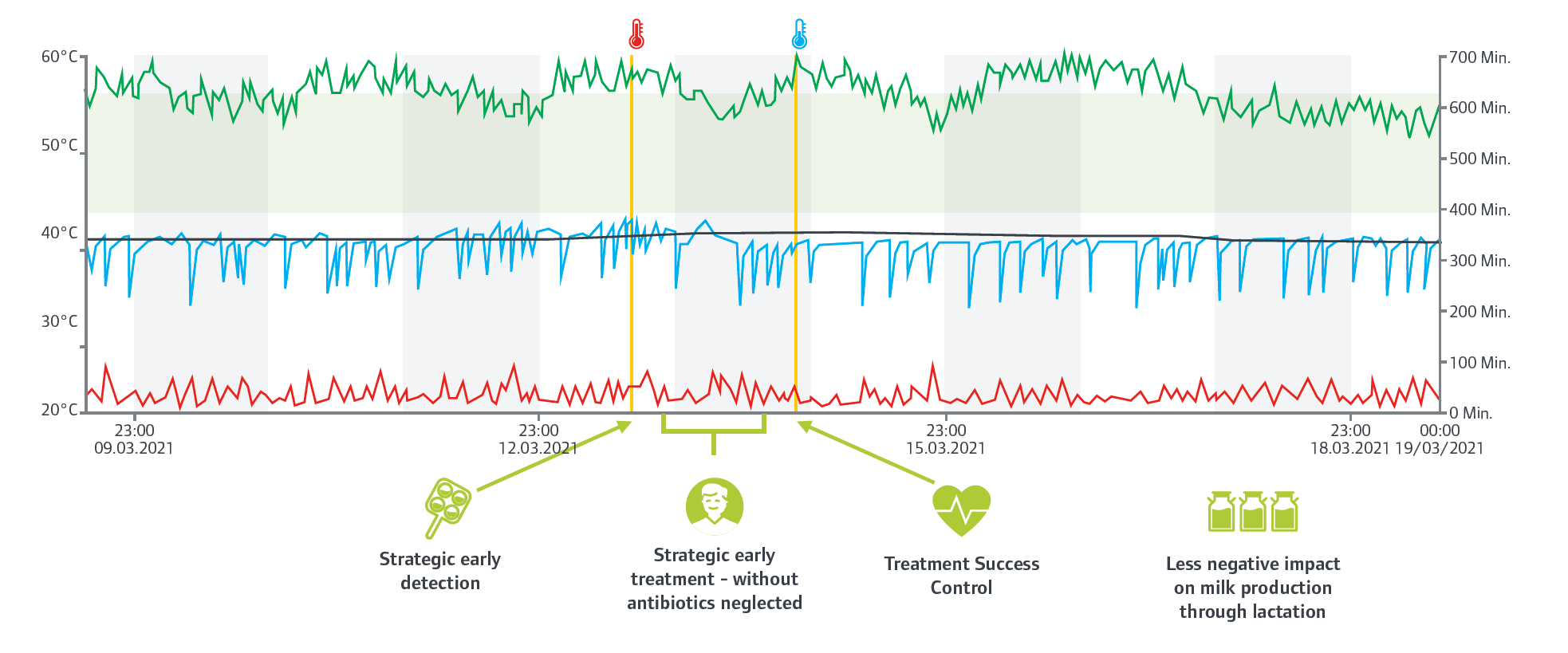
The use of cow monitoring technology in heat detection and rumination changes, has become commonplace on many dairy farms around New Zealand, but how about its use for detecting mastitis and reducing the financial impact of one of the most prevalent health issues in the New Zealand dairy herd?
Cow monitoring devices that rely on rumination can aid in the detection of severe mastitis. Rumination has been shown to decrease within the 24 hours prior to mastitis being clinically detected, so, in some cases of mastitis, a health alert may be triggered prior to clinical mastitis being detected during milking. However, the drop in rumination information becomes more useful and reliable when combined with either internal temperature or milk conductivity data.
Work done on American dairy cows has shown an internal temperature increase of 0.8°C from a cow`s normal temperature within the four days prior to a clinical diagnosis of mastitis. In the study of over 1,000 cows, two out of three times a temperature increase was noted, the cow went on to develop mastitis within four days. Reticular boluses that can measure internal body temperature are now on the New Zealand market, giving us the ability to detect changes in body temperature that are likely due to the start of a mastitis infection. This enables farmers to act quickly and hopefully prevent the cow becoming clinical, which condition will lead to time out of the vat and the use of antibiotics, as well as pain and discomfort for the animal.
Milk conductivity meters can also be used to help in the early detection and treatment of mastitis. Information from the in-shed conductivity meters generates a ‘suspect for mastitis’ report which can be combined with rumination data to allow early identification and assessment of a cow that is likely to be in the early stages of mastitis. This again enables early treatment where indicated to reduce clinical mastitis incidence in the herd.
Below is an example of a case of mastitis where the early temperature increases were not investigated and the cow went on to develop clinical mastitis. In this case the cow’s rumination did not drop low enough to trigger a health alert until after the fourth incidence of temperature increase. The cow was then diagnosed with clinical mastitis and started on a course of intramammary antibiotics. Following treatment, her rumination and temperature started to normalise again.

A further example of a cow that alerted with an increase in temperature is below. In this case, when the farmer received the alert, a CMT was performed on the cow and slight streaks were detected. The cow was given an anti-inflammatory without a withhold, and in this case she did not go on to develop clinical mastitis and was able to continue being milked into the vat.

If you have any questions regarding cow monitoring technology, please feel free to reach out to us on cowsmart@vetlife.co.nz or visit CowSmart more information on our website.